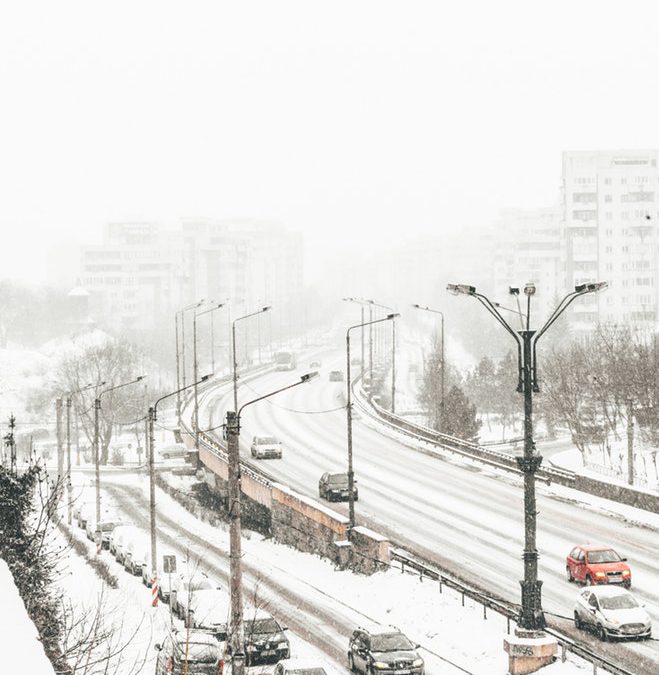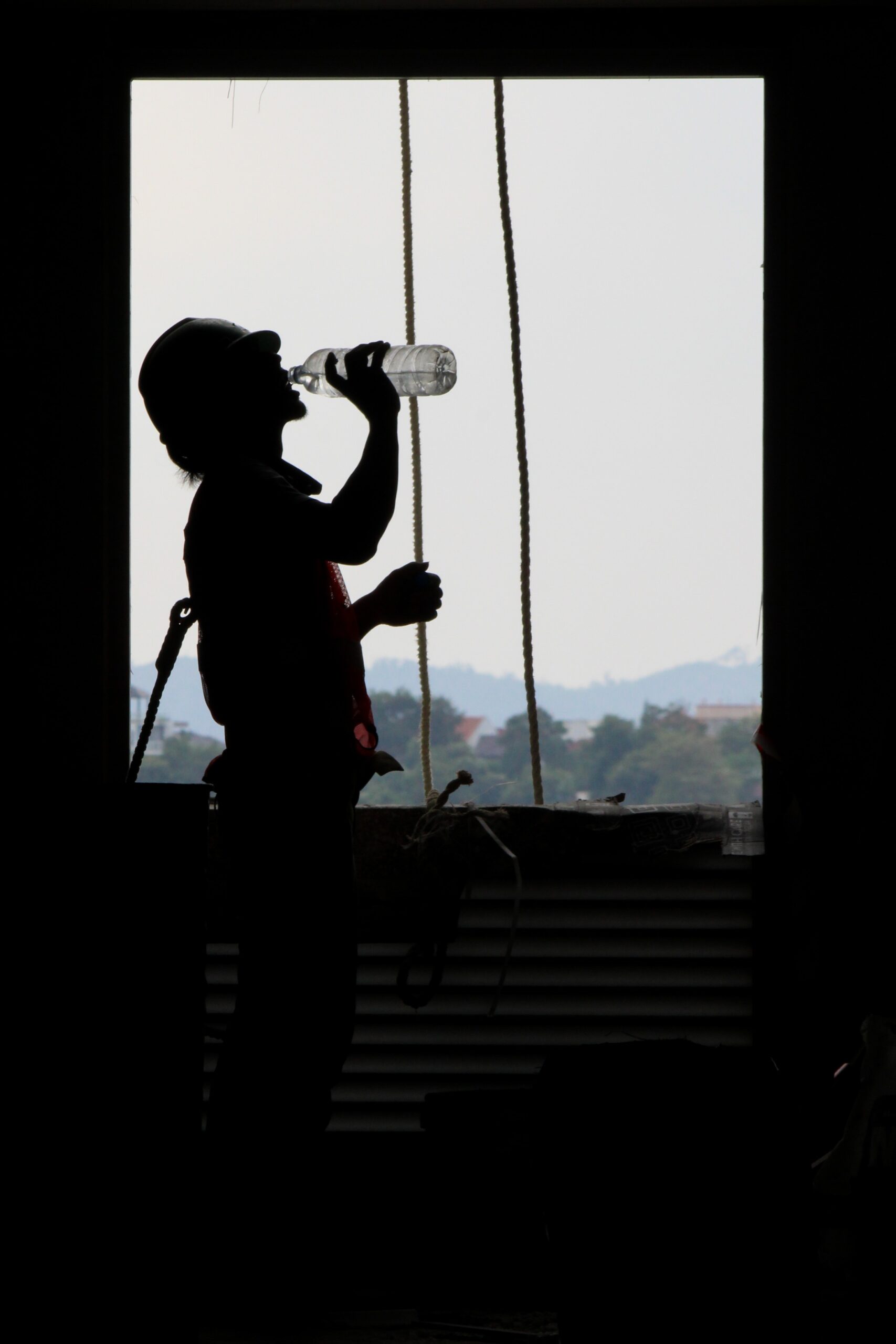Winter is coming! Aside from the Game of Throne’s tagline, yes, the winter months are upon us. Along with cold temperatures and snowfall that are present during winter months, an increase in vehicle incidents are statistically on the way as well.
According to the Federal Highway Administration, nearly 1,300 people are killed in vehicle crashes and more than 100,000 people are injured in vehicle crashes every year with road conditions that contain snow, slush, and icy pavement.
In the busy business world of today, it is imperative families, employees, and individuals can travel the roads safely. Just because there is snow on the ground, doesn’t mean vehicles incidents have to occur.
Here are the Top 8 Winter Driving Safety Tips that can reduce the likelihood you will be involved in a vehicle accident.
1.) Check the weather radar for snow
The first way to be prepared for driving during winter months and improve your winter driving safety is to check the weather radar the night before. Checking the radar not only allows you to plan for your trip the next day, but it gives you a live update on any storms that could be passing through your area. Keep in mind, weather patterns change, so it is important to check the weather radar several times throughout the day.
2.) Fix any maintenance issues
Have you been ignoring those lights on the dashboard telling you to service your vehicle? If so, you better plan on taking your vehicle in for service. Keeping your vehicle serviced during winter months gives you the assurance that your 2008 Toyota Camry is actually safe to drive even with heavy snow. Don’t ignore these warning lights. If you are in an area that statistically receives heavy amounts of snow fall, consider changing your tires for a winter recommend tire. Here are a few resources with tips on how to winterize your vehicle.:
Bridgestone
https://www.bridgestonetire.com/tread-and-trend/drivers-ed/winter-snow-tires-vs-all-season-tires
Tire Rack.com
https://www.tirerack.com/content/tirerack/desktop/en/winter_snow/packages.html
Good Year
https://www.goodyear.com/en-US/tires/category/snowK
3.) Inspect your vehicle daily
Conducting a quick inspection of your vehicle on a daily basis is one way to improve your winter driving safety. Allow the vehicle to warm up 15 minutes before you are set to leave and bust out that ice scraper. Dust off snow or ice that is on the windows, turning signals and on top of your vehicle. Walk 360 degree around your vehicle and look for any signs that it is mechanically unsafe to drive. Make sure to frequently check that your windshield wipers are in good condition and windshield wiper fluid levels are topped off. Test and verify the turning signals and 4-Way Hazard lights are working properly. If there are any lights that are not working, get it fixed immediately. This quick 5-10-minute check is worth it.
4.) Leave the house earlier
During winter months it is tempting to stay in your warm, cozy bed that extra 30 minutes, so you don’t have to face the reality of the blistering cold. This is a major Error Precursor. Road conditions in the winter months often makes it unsafe to drive the normal posted speed limits. If it normally takes you 20 minutes to get to work, leave your home an additional 20 minutes earlier. Running late to work contributes to drivers feeling the need to speed. Leaving early will allow you to avoid being late and improve your winter driving safety.
5.) Work from home
More and more companies allow the option to work from home to their employees. If you can work from home, avoid the trip to the office altogether. Working from home keeps more drivers off the road and reduces the number of vehicles that could potentially be involved in a vehicle incident.
6.) Utilize car trip services (Uber & Lyft)
Taking an Uber or Lyft may be a safer alternative than driving your own vehicle to the grocery store or to get takeout especially during winter months. The two trip service companies allow individuals to request a ride from almost anywhere. They also offer Programs such as Uber Eats, where drivers will pick up food up for you and deliver it for a small fee. Instead of going to get takeout food, have it delivered right to you! Be advised however, before getting in any car trip service, that the driver is ultimately in control of the vehicle. If you feel your car service driver is driving unsafely, request they slow down or pull over at a safe location.
7.) Minimize Distractions Behind the Wheel
If you can’t work from home, and requesting an uber to work is out of the question, minimizing distractions behind the wheel is one of the most proactive solutions to reducing vehicle incidents. Distractions can include: cell phones, radios, eating, drinking, passengers, pets, etc. Utilize Bluetooth audio ear pieces for hands free calling. Turn the radio off and wait until you get to work to drink your Dunkin coffee. If there are passengers in the vehicle with you, ensure everyone has their seat belt on, and is not distracting you with questions like: “Did you see the new Netflix series that was just released last night?”. The simple distracting conversation can wait.
8.) SLOW DOWN This Season
The easiest way to to improve your winter driving safety is to SLOW DOWN! Practice the 3-Second Rule and allow more space in between you and the vehicle in front of you Here is how to practice the 3-Second Rule. As you are driving pick an object that you will pass (road sign, mile marker, structure, building etc). Count to 3 out loud. When the vehicle in front of you passes that object begin to count to 3 seconds. If you reach that same object in under 3 seconds, you are following to closely. Monitor road conditions and allow more space between you and other vehicles on less maintained roads. If there is excess snow, ice, or slush, increase the 3 seconds, to 5. When following larger vehicles such as tanker trucks, or eighteen wheeler’s it may be necessary to increase to 10 seconds. Braking on snow and ice takes longer. Give yourself more space and slow down.
Was this helpful? Leave a comment, and check out our other blog posts for more safety, first aid and health care tips. Go to b42l.com






Great read here, these are a lot of the guidelines I follow from constantly checking the weather, to my personal favorite working from home when there is a threat of inclement weather. The 3-second rule can do a lot more than just keep people safe with slick roads, it can reduce travel time in general because it promotes better traffic flow. Great article boys!
The 3 second rule for maintaining separation from the vehicle
Ahead of you. However it’s designed for dry weather. When weather is a factor you need to at least double it